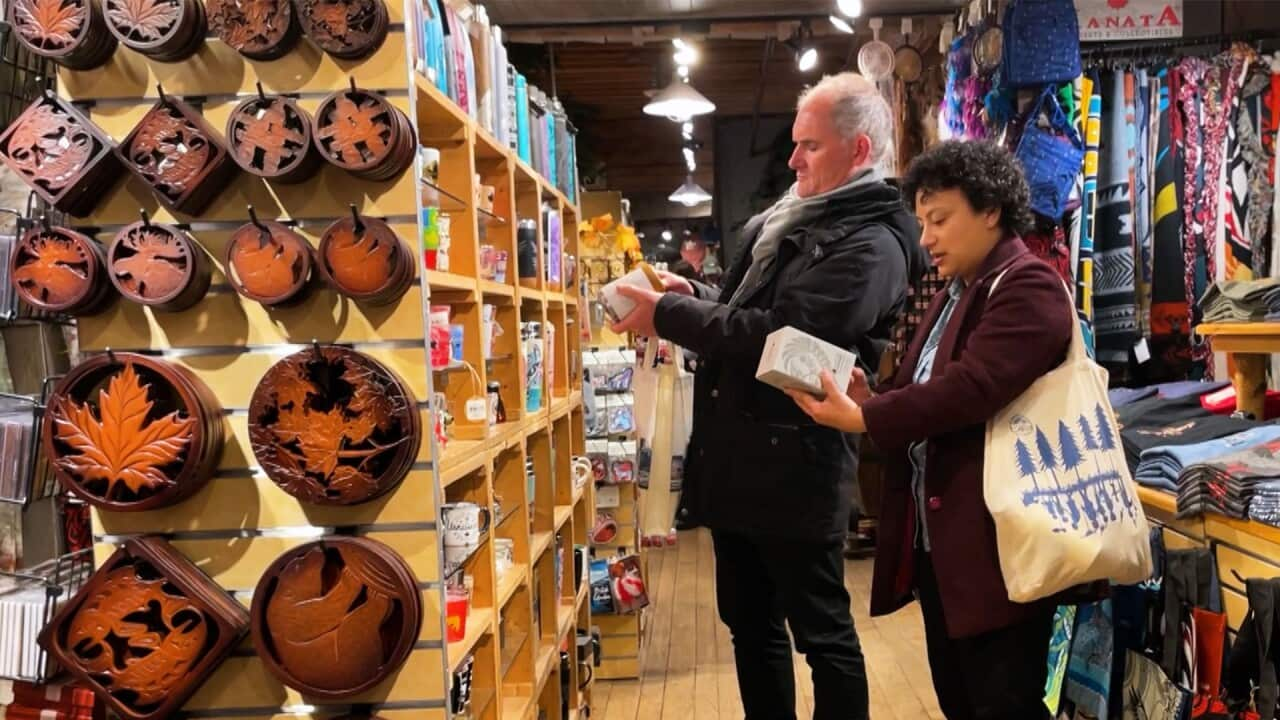It’s a symbol of Vancouver and one of the most recognisable Indigenous carvings: a wooden totem pole in a form of a thunderbird standing on top of a grizzly bear holding a human.
The original house post was created in the early 1900s by the Indigenous artist Charles James and is on display at the Vancouver Museum. A full-size replica, carved by another Indigenous artist, Tony Hunt, stands in the city’s largest park. And cheap copies of the iconic totem pole are widely sold in souvenir shops as fridge magnets and bottle openers.
As in Australia, Canadian tourist shops are awash with fake Indigenous art and crafts. First Nations artists in Canada have been battling to protect their artwork from being reproduced and sold without their permission and their culture from being appropriated and profited from.
Tourism is a lucrative industry in British Columbia that brings in billion of dollars a year. In 2019 alone, it generated CA$22.3 billion ($25.3 billion) in revenue. A portion of tourism revenues comes from the sales of Indigenous souvenirs and gifts.
In 2019, local media outlet the Indigenous souvenir industry of Vancouver, the province’s largest city. The team, led by journalist Francesca Fionda, visited 40 souvenir shops and sampled 260 different items. Their research revealed that 75 per cent of the stores sold at least some inauthentic Indigenous art.
Fionda contacted companies that were manufacturing Indigenous-themed items to find out if they had paid or collaborated with First Nations artists. In most cases, they hadn’t.

Journalist Francesca Fionda investigated the lucrative Indigenous souvenir industry in Vancouver. Credit: SBS Dateline
“This is an example of a company that we reached out to. They don’t collaborate with Indigenous artists but have pretty misleading labels,” she said.
First Nations artists speak out
Richard Hunt is one of Canada’s most prominent Indigenous carvers. He says he’s been fighting intellectual theft for as long as he’s been a carver.
“I don't care how good or bad whatever that's being copied, I think it should stop,” Hunt told SBS Dateline.
“It's fraudulent art. It's fake. [It] doesn't have a meaning, doesn't have a life. All it says to me is money.”
The image of a totem pole he carved was screen printed onto canvas and sold online by someone he’d never met.
“I think every artist should be happy with somebody wanting to produce their work, but counted them in,” Hunt said.
But it’s not just about the copyright to his artwork that he owns as an artist. It’s about the heritage that belongs to the Indigenous people that he feels is being ripped off.
“They're figures that come down from my generations, that are passed down to us,” he said. “It's our culture, we own it.”
He fears younger carvers will stop because there’ll be no incentive for them to make a living from their art.

Richard Hunt says he's been fighting intellectual theft of his artwork for 50 years that he's been a carver. Credit: SBS Dateline
In 2021, an art dealer in British Columbia admitted to misleading the public and selling artwork made by the artist whose Indigenous identity he had fabricated.
In March this year, the Ontario police seized more than 1,000 replica paintings, prints and other artwork purported to be by Indigenous artist Noval Morrisseau. Eight people were arrested for the art forgery estimated at CA$100 million ($111 million).
“I think there are more and more high-profile cases of this happening and it's making people think about, 'Okay, how can we address this problem?" Fionda said.











